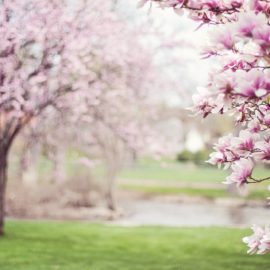
Planting trees is a good idea. I have planted many in my yard and they provide shade and beauty. There are non profits in the city that do this and one we might want to support and work with.
Lounging in her porch chair, Pamela LeBeau watched dozens of volunteers descend upon Pontchartrain Park and plunge shovels into the dirt. “They’re cute,” she said, as gloved hands placed the root balls of a young native Louisiana trees, ranging from live oaks to magnolias, into holes along St. Ferdinand Street. To LeBeau and her daughter, Pamela, more trees mean more shade for sitting outside and fresher air. The historic New Orleans neighborhood gained about 80 new trees Saturday, and that was only the beginning. The environmental nonprofit Sustaining Our Urban Landscape, aims to plant at least 600 more in partnership with the residents. It’s one of several initiatives to mitigate the effects of extreme heat and flooding, both of which are expected to worsen as the world continues to warm.
nola.com
Trees add beauty but also combat climate change and discourage hot spots. New Orleans is afflicted with both. Minority areas are the most impacted and this helps one of them.
Once a cypress swamp, Pontchartrain Park was created between 1955 and 1961 by clear-cutting the land for New Orleans’ rising Black middle class, segregated from the city’s white residents living in affluent areas nearby. At the time, white residents in the adjacent Gentilly Woods area fought its construction. When that failed, they blocked their new neighbors from using some streets, sending Black residents on a longer route to leave the area. “But yet, we survived it,” said Gretchen Woods, president of the Pontchartrain Park Neighborhood Association. Her parent’s generation had their own schools, churches, playgrounds and golf course. “Fast forward to 2021, we have a more diverse community, but everybody still has the same goal in mind: to improve their quality of life.” That spirit has led the community to embrace green infrastructure, to complement other forms of drainage. As part of City Hall’s Gentilly Resilience District, millions of dollars have spent to transform portions of the Joseph Bartholomew Golf Course into vegetated bioswales and rain gardens, to capture and hold storm water before it enters New Orleans’ beleaguered drainage system.
Once a swamp always a swamp and the area at times resembles one.
Sometimes the area still behaves like a swamp, SOUL Executive Director Susannah Burley said, with the land sinking faster than in other areas of the city. Her nonprofit’s tree planting will build on City Hall’s investments, offering another piece of natural infrastructure to soak in water and diminish flooding during rainstorms. “Areas of concentrated wealth are where trees have been planted through municipal efforts in the past, so what we’re trying to do is prioritize areas that have historically been disenfranchised by municipal services and give them trees,” Burley said. The new trees also stand to lower the temperature by as much as 8 degrees in the neighborhood, Burley said. “If you stayed during Hurricane Ida and you didn’t have electricity, you know how hot it is here,” she said. “We don’t have to be that hot. We could be so much cooler if we just used the natural power of the urban forest.”
The neighborhood is also rebuilding itself and the trees will help.
Beyond green infrastructure, Wood said the neighborhood is in the early stages of planning a new residential center that would host a community solar project large enough to power 1,000 houses. That would lower residents’ energy costs and could provide backup power, a role emphasized by lengthy blackouts after Ida struck Aug. 29. “With climate change, we have to be ahead of what’s happening,” Woods said. “We can’t stop nature itself and we can’t stop what God has planned for us, but we can live in harmony with some of the elements that are changing around us.”
Plant trees. Help a neighborhood. Good works to help fight climate change. What an easy way to do this!

